Ali Rıza Ekti
Graph Attention Networks for Channel Estimation in RIS-assisted Satellite IoT Communications
Apr 01, 2021
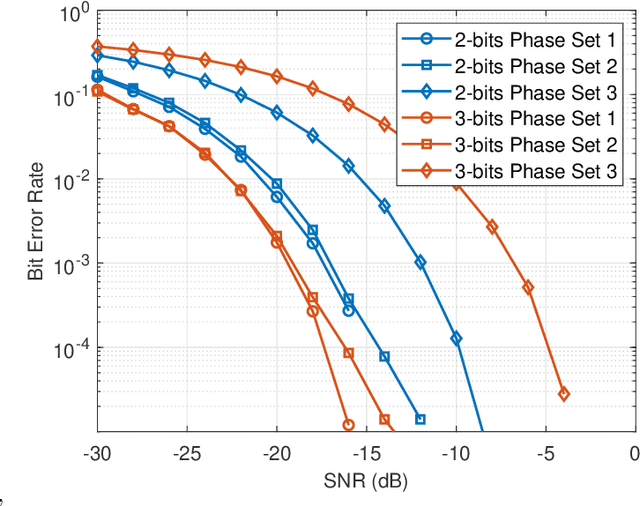


Abstract:Direct-to-satellite (DtS) communication has gained importance recently to support globally connected Internet of things (IoT) networks. However, relatively long distances of densely deployed satellite networks around the Earth cause a high path loss. In addition, since high complexity operations such as beamforming, tracking and equalization have to be performed in IoT devices partially, both the hardware complexity and the need for high-capacity batteries of IoT devices increase. The reconfigurable intelligent surfaces (RISs) have the potential to increase the energy-efficiency and to perform complex signal processing over the transmission environment instead of IoT devices. But, RISs need the information of the cascaded channel in order to change the phase of the incident signal. This study proposes graph attention networks (GATs) for the challenging channel estimation problem and examines the performance of DtS IoT networks for different RIS configurations under GAT channel estimation.
Reconfigurable Intelligent Surfaces in Action for Non-Terrestrial Networks
Dec 02, 2020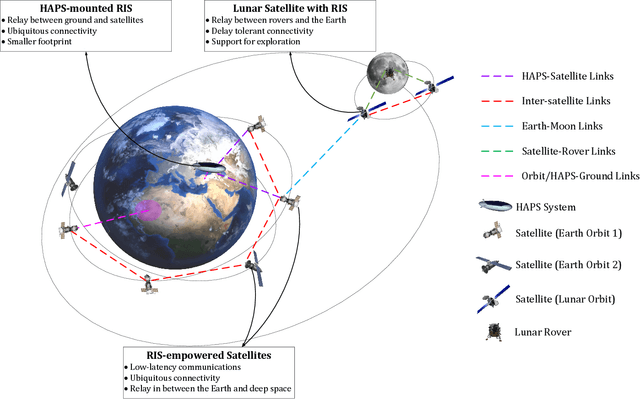
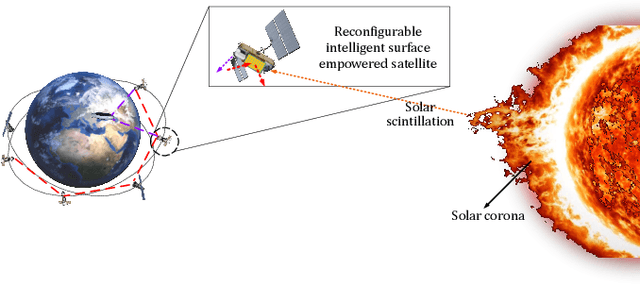
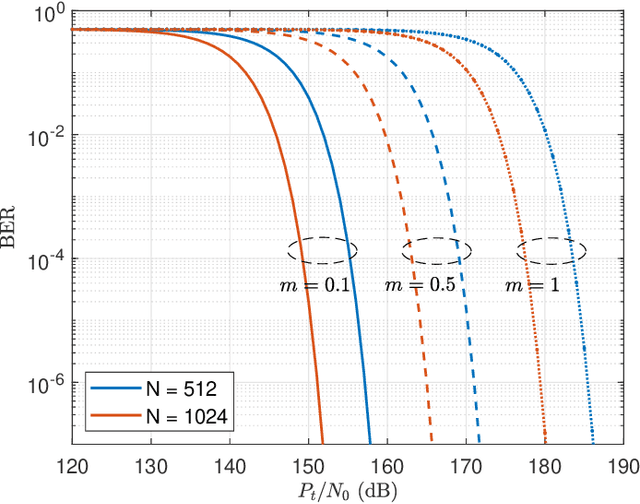
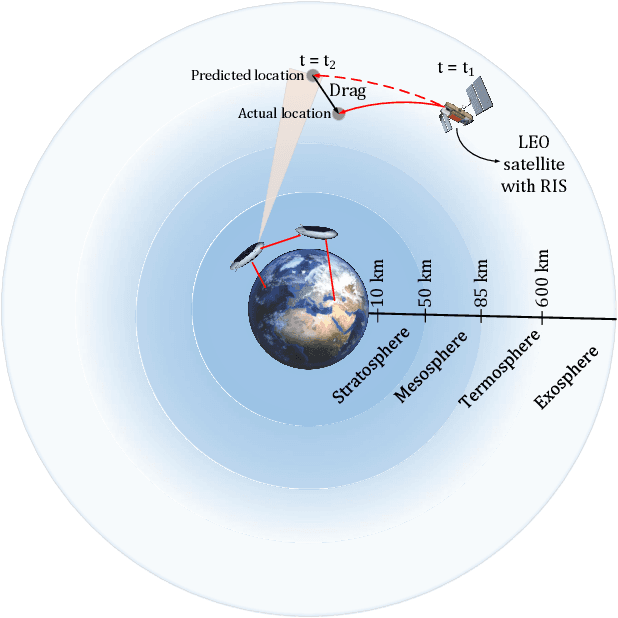
Abstract:The next-generation communication technology is building on the cooperation of terrestrial networks with non-terrestrial networks that contain mega-constellations such as high-altitude platform station and low-Earth orbit satellites. On the other hand, humanity has embarked on a long road to establish new habitats in other planets by increasing its searches in space. This deems the cooperation of non-terrestrial networks with deep space networks necessary. In this regard, reconfigurable intelligent surfaces (RISs) are discussed to improve and escalate this collaboration owing to the fact that they perfectly match with the size, weight, and power restrictions of the operational environment of space. This study presents a comprehensive framework of RIS-assisted non-terrestrial and interplanetary communications by pinpointing challenges, use cases, and open issues along with simulation results.
Channel Estimation for Full-Duplex RIS-assisted HAPS Backhauling with Graph Attention Networks
Oct 22, 2020

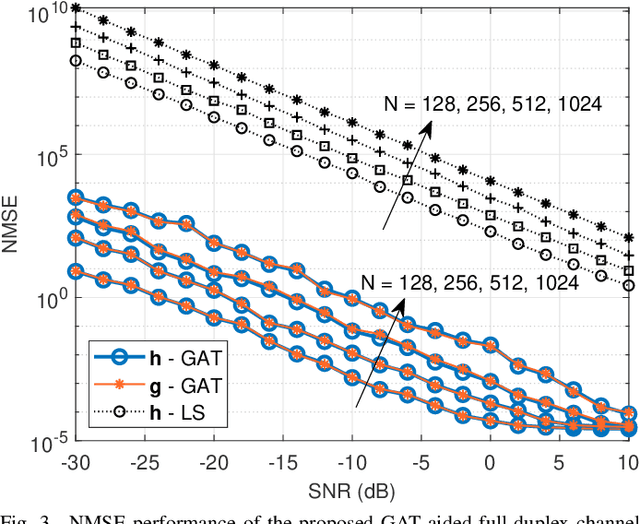
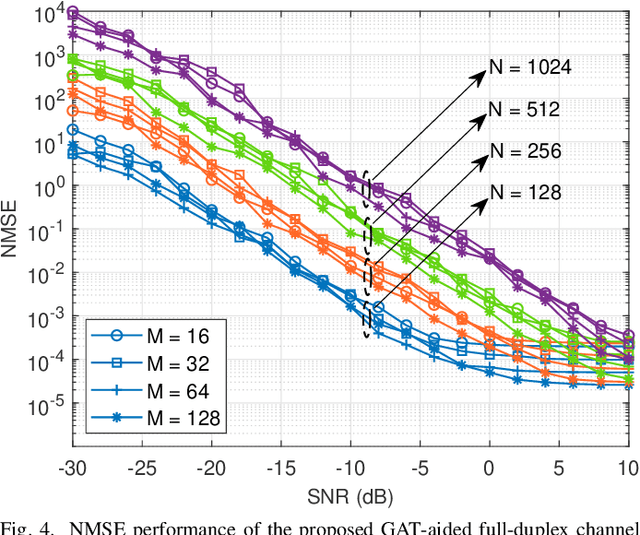
Abstract:In this paper, the graph attention network (GAT) is firstly utilized for the channel estimation. In accordance with the 6G expectations, we consider a high-altitude platform station (HAPS) mounted reconfigurable intelligent surface-assisted two-way communications and obtain a low overhead and a high normalized mean square error performance. The performance of the proposed method is investigated on the two-way backhauling link over the RIS-integrated HAPS. The simulation results denote that the GAT estimator overperforms the least square in full-duplex channel estimation. Contrary to the previously introduced methods, GAT at one of the nodes can separately estimate the cascaded channel coefficients. Thus, there is no need to use time-division duplex mode during pilot signaling in full-duplex communication. Moreover, it is shown that the GAT estimator is robust to hardware imperfections and changes in small scale fading characteristics even if the training data do not include all these variations.
Real-World Considerations for Deep Learning in Wireless Signal Identification Based on Spectral Correlation Function
Mar 17, 2020
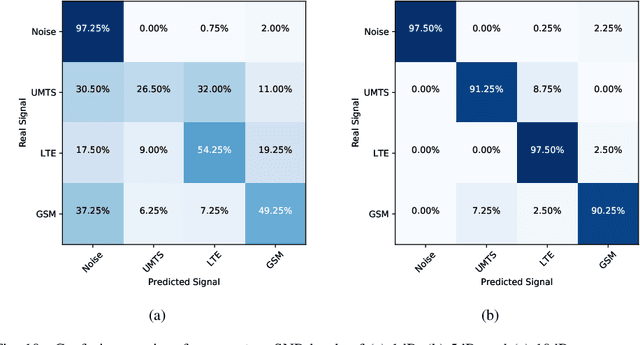
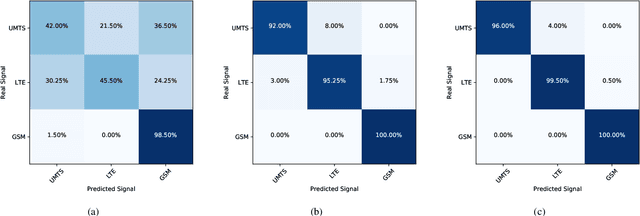
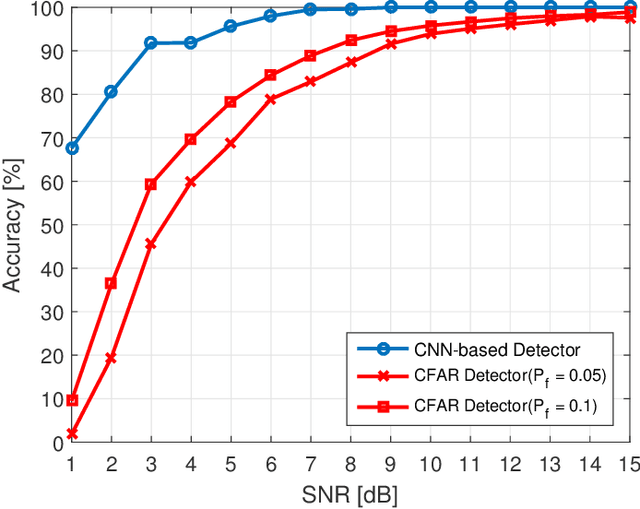
Abstract:This paper proposes a convolutional neural network (CNN) model which utilizes the spectral correlation function (SCF) for wireless radio access technology identification without any prior information about bandwidth and/or the center frequency. The sensing and classification methods are applied to the baseband equivalent signals. Two different approaches are elaborated. The proposed method is implemented in two different settings; in the first setting, signals are jointly sensed and classified. Sensing and classification are conducted in a sequential manner in the second setting. The performance of both approaches is discussed in detail. The proposed method eliminates the threshold estimation processes of classical estimators. It also eliminates the need to know the distinct features of signals beforehand. Over-the-air real-world measurements are used to show the robustness and the validity of the proposed method and various wireless signals are successfully distinguished from each other without any a priori knowledge. The over-the-air real-world measurements are also shared in the format of SCF. The performance of SCF-based identification is compared with the cases when fast Fourier transform and amplitude-phase representation are used as the training inputs for CNN. The comparative performance of the proposed method is quantified by precision, recall, and F1-score metrics. Moreover, a setup to compare the performance of the proposed approach with classical cyclostationary features detection (CFD) is prepared. Measurement results indicate the superiority of the proposed method against CFD, especially at the low signal-to-noise ratio regime.
Robust and Fast Automatic Modulation Classification with CNN under Multipath Fading Channels
Nov 12, 2019
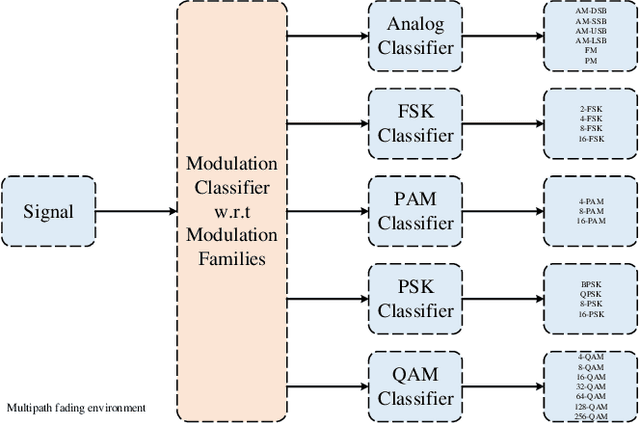
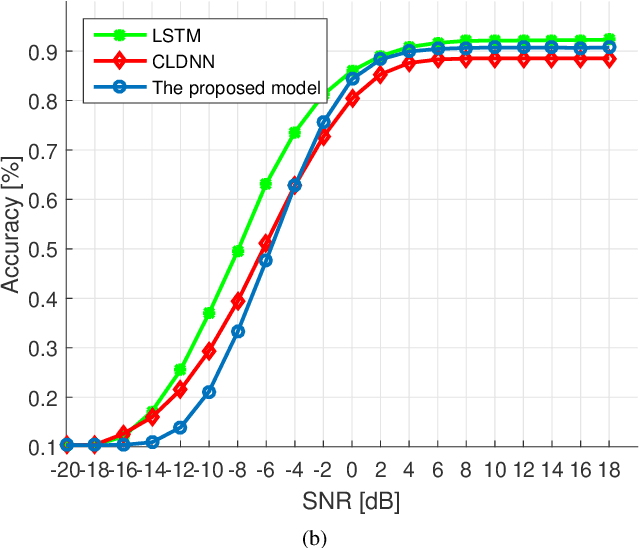

Abstract:Automatic modulation classification (AMC) has been studied for more than a quarter of a century; however, it has been difficult to design a classifier that operates successfully under changing multipath fading conditions and other impairments. Recently, deep learning (DL)-based methods are adopted by AMC systems and major improvements are reported. In this paper, a novel convolutional neural network (CNN) classifier model is proposed to classify modulation classes in terms of their families, i.e., types. The proposed classifier is robust against realistic wireless channel impairments and in relation to that when the data sets that are utilized for testing and evaluating the proposed methods are considered, it is seen that RadioML2016.10a is the main dataset utilized for testing and evaluation of the proposed methods. However, the channel effects incorporated in this dataset and some others may lack the appropriate modeling of the real-world conditions since it only considers two distributions for channel models for a single tap configuration. Therefore, in this paper, a more comprehensive dataset, named as HisarMod2019.1, is also introduced, considering real-life applicability. HisarMod2019.1 includes 26 modulation classes passing through the channels with 5 different fading types and several numbers of taps for classification. It is shown that the proposed model performs better than the existing models in terms of both accuracy and training time under more realistic conditions. Even more, surpassed their performance when the RadioML2016.10a dataset is utilized.
 Add to Chrome
Add to Chrome Add to Firefox
Add to Firefox Add to Edge
Add to Edge